Abstract
The faecal Escherichia coli flora was studied in 89 infants. Each infant was followed with a mean of 12 faecal samples (range 5-21) between 0 and 18 months of age. All isolates were assayed for P fimbriae and biochemically phenotyped and the persistence of each strain (phenotype) in the infant's gut was determined. In a subset of strains the occurrence of type 1 fimbriae and adherence to HeLa cells was studied. Thirty-one per cent of isolates belonging to strains colonizing for longer than 6 months expressed P fimbriae compared to 19% of the isolates from strains colonizing 1-6 months or transient strains colonizing less than 1 month. Type 1 fimbriae and adherence to HeLa cells occurred similarly often in all groups of strains. We conclude that P fimbriae, but not type 1 fimbriae or HeLa cell adherence seemed to contribute to the ability of the E. coli strain to colonize the human intestine.
Full text
PDF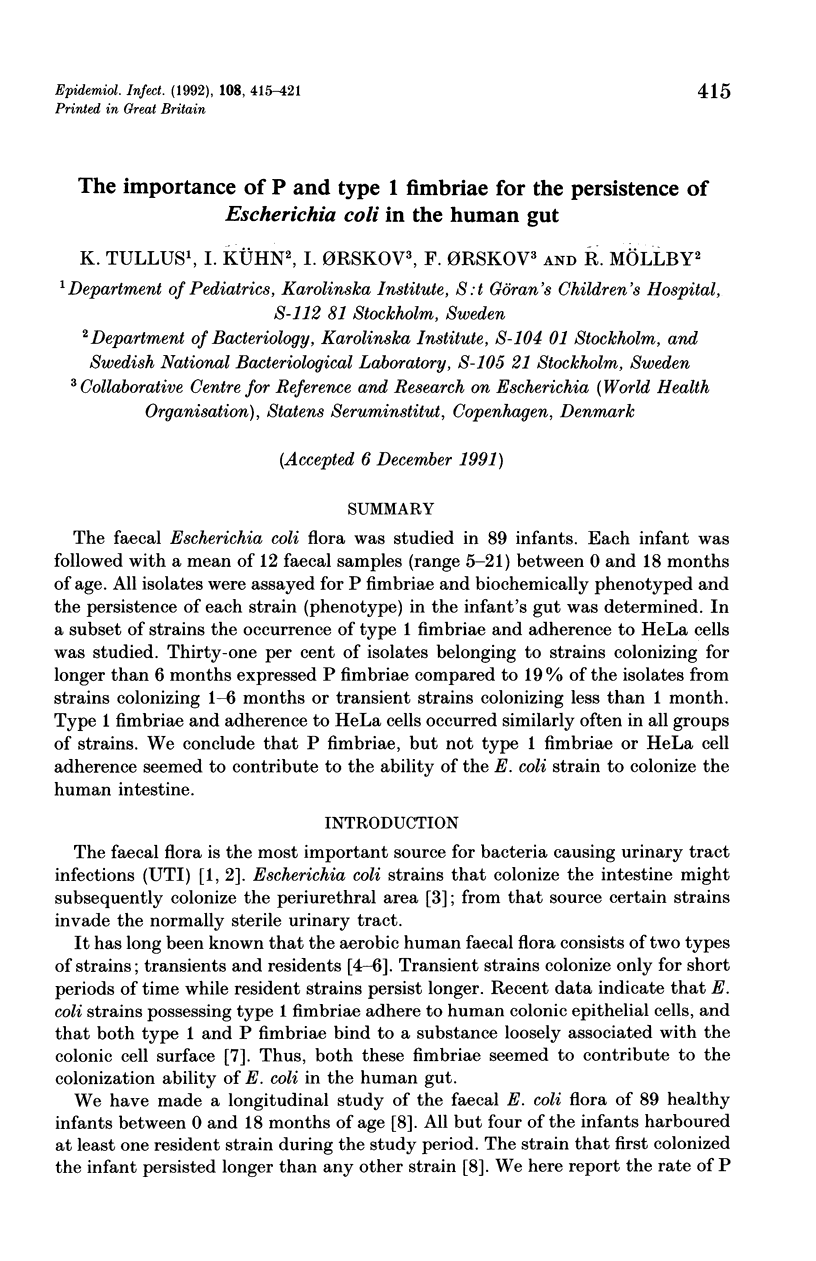
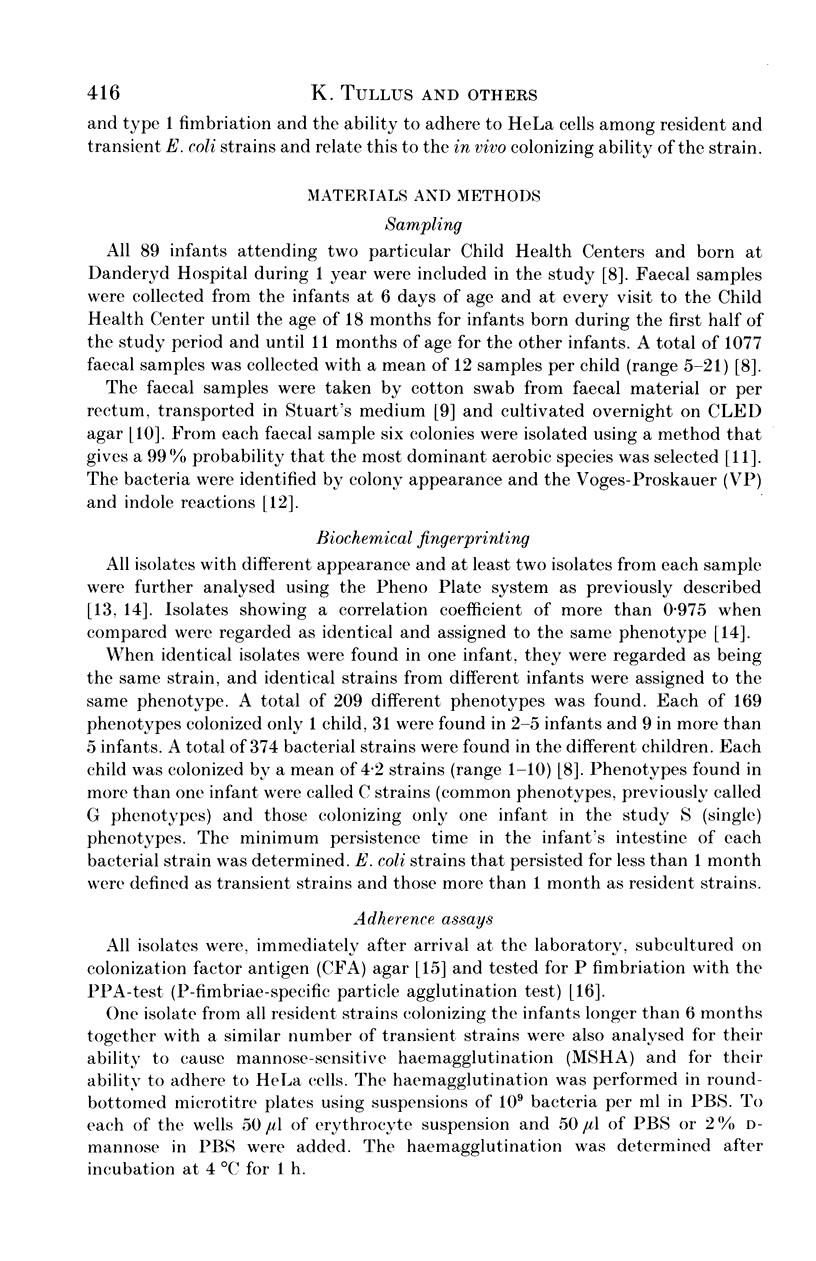
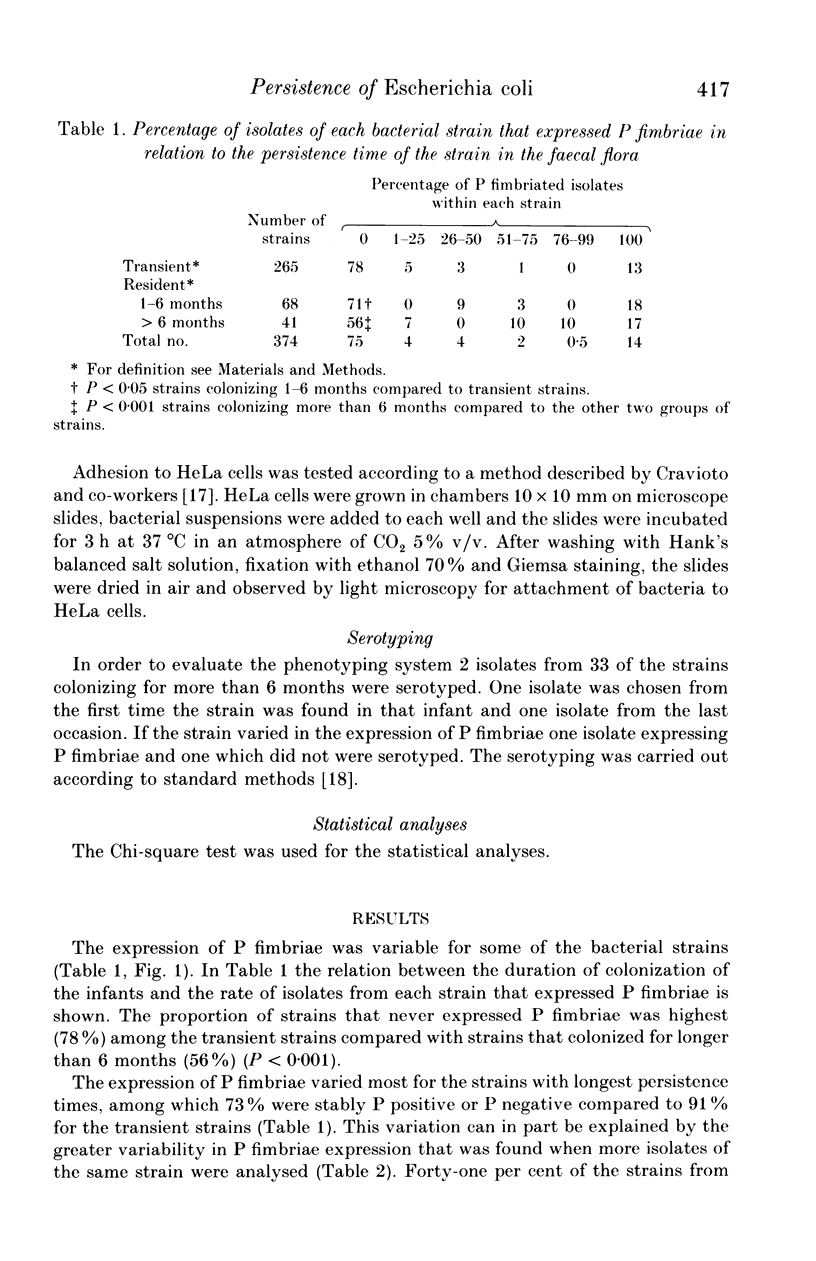
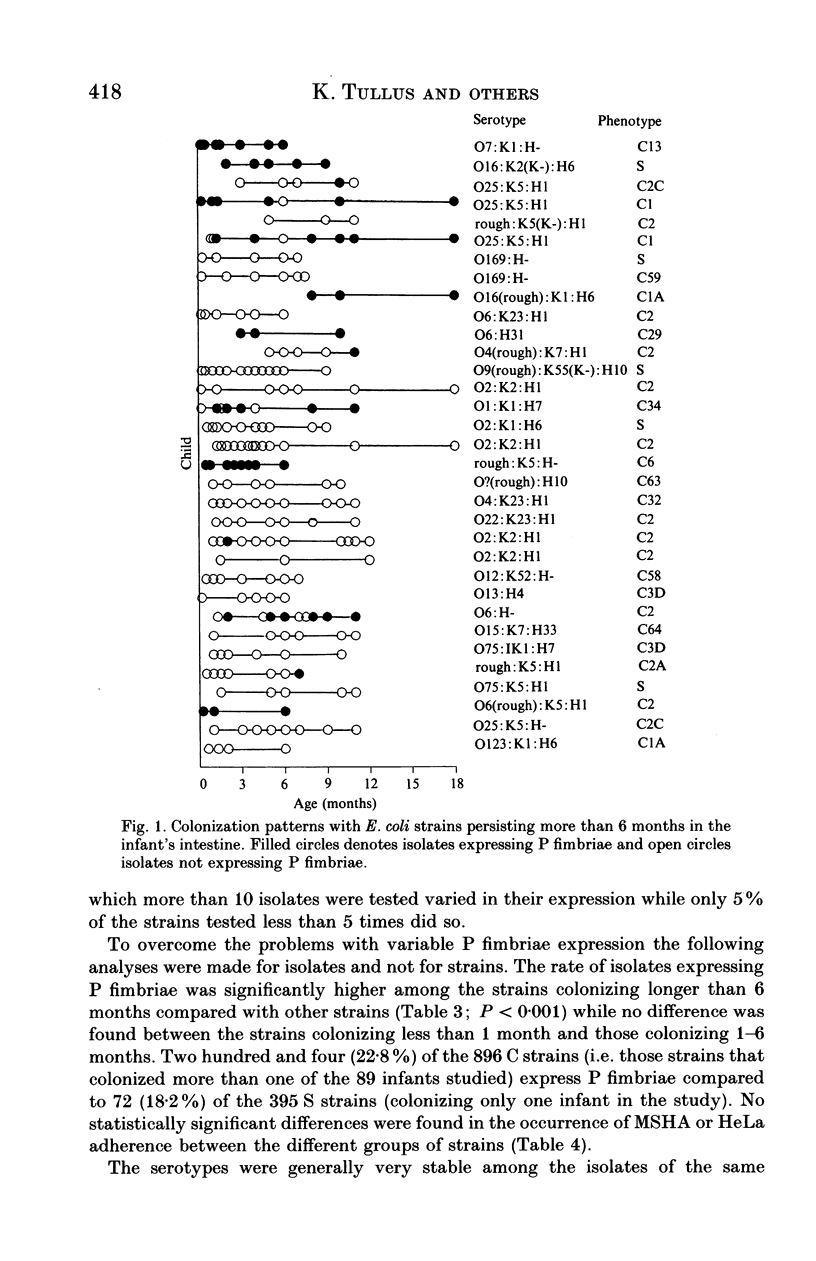
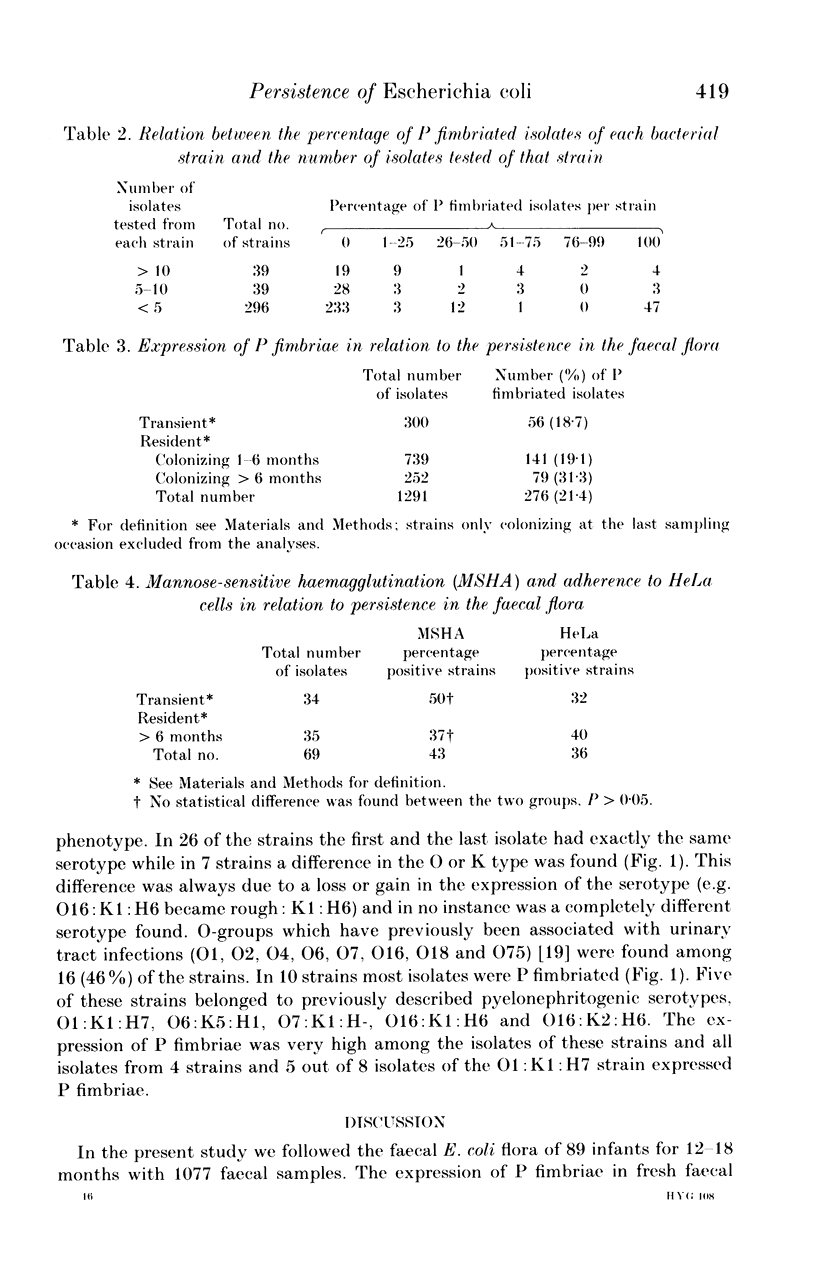
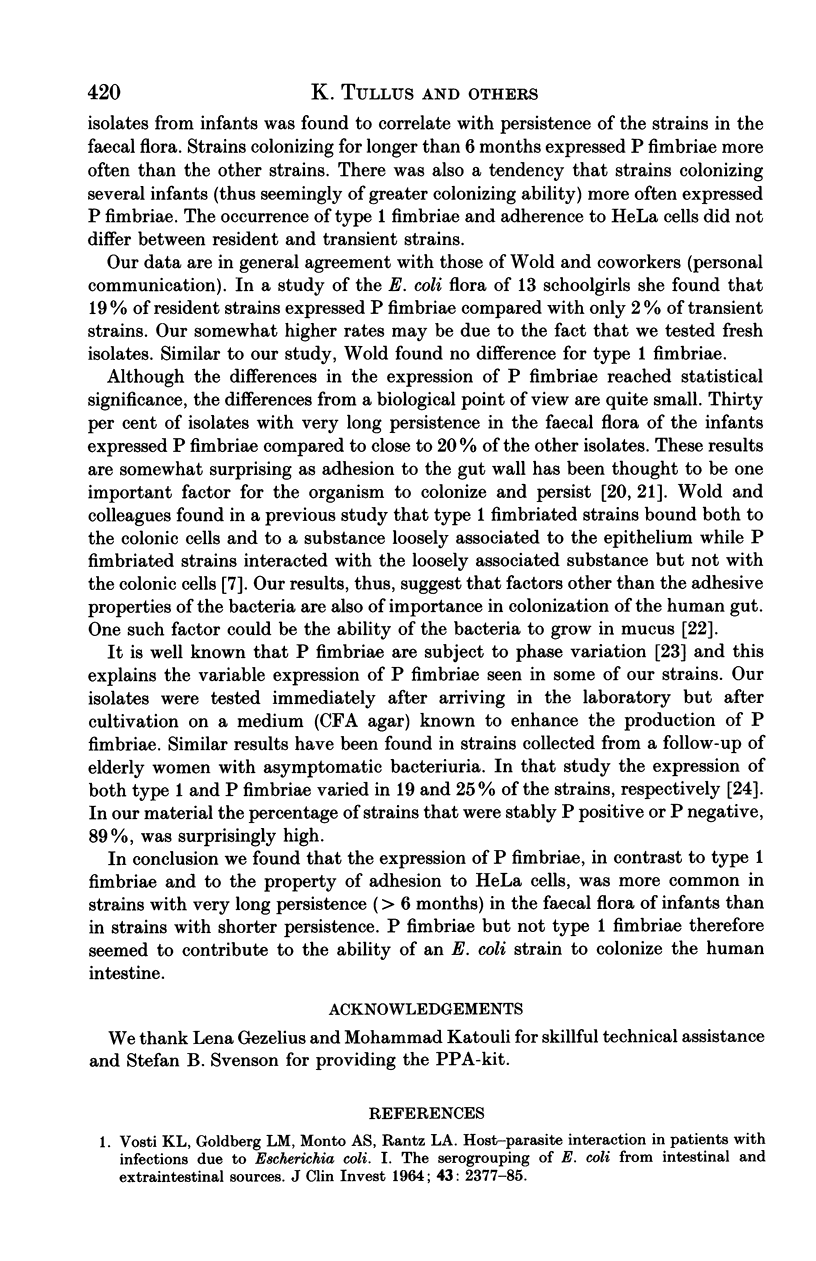
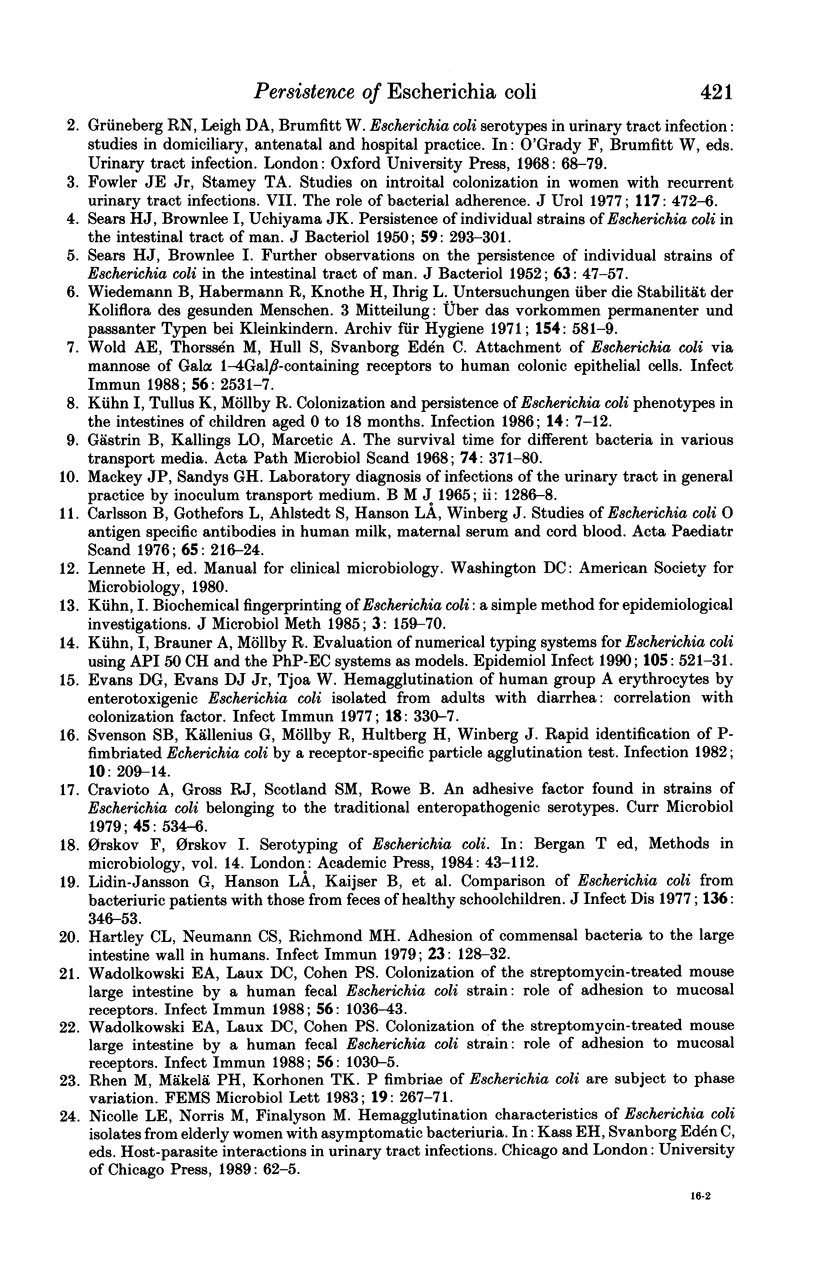
Selected References
These references are in PubMed. This may not be the complete list of references from this article.
- Carlsson B., Gothefors L., Ahlstedt S., Hanson L. A., Winberg J. Studies of Escherichia coli O antigen specific antibodies in human milk, maternal serum and cord blood. Acta Paediatr Scand. 1976 Mar;65(2):216–224. doi: 10.1111/j.1651-2227.1976.tb16541.x. [DOI] [PubMed] [Google Scholar]
- Evans D. G., Evans D. J., Jr, Tjoa W. Hemagglutination of human group A erythrocytes by enterotoxigenic Escherichia coli isolated from adults with diarrhea: correlation with colonization factor. Infect Immun. 1977 Nov;18(2):330–337. doi: 10.1128/iai.18.2.330-337.1977. [DOI] [PMC free article] [PubMed] [Google Scholar]
- Fowler J. E., Jr, Stamey T. A. Studies of introital colonization in women with recurrent urinary infections. VII. The role of bacterial adherence. J Urol. 1977 Apr;117(4):472–476. doi: 10.1016/s0022-5347(17)58501-8. [DOI] [PubMed] [Google Scholar]
- Gästrin B., Kallings L. O., Marcetic A. The survival time for different bacteria in various transport media. Acta Pathol Microbiol Scand. 1968;74(3):371–380. doi: 10.1111/j.1699-0463.1968.tb03490.x. [DOI] [PubMed] [Google Scholar]
- Hartley C. L., Neumann C. S., Richmond M. H. Adhesion of commensal bacteria to the large intestine wall in humans. Infect Immun. 1979 Jan;23(1):128–132. doi: 10.1128/iai.23.1.128-132.1979. [DOI] [PMC free article] [PubMed] [Google Scholar]
- Kühn I., Brauner A., Möllby R. Evaluation of numerical typing systems for Escherichia coli using the API 50 CH and the PhP-EC systems as models. Epidemiol Infect. 1990 Dec;105(3):521–531. doi: 10.1017/s0950268800048147. [DOI] [PMC free article] [PubMed] [Google Scholar]
- Kühn I., Tullus K., Möllby R. Colonization and persistence of Escherichia coli phenotypes in the intestines of children aged 0 to 18 months. Infection. 1986 Jan-Feb;14(1):7–12. doi: 10.1007/BF01644802. [DOI] [PubMed] [Google Scholar]
- Lidin-Janson G., Hanson L. A., Kaijser B., Lincoln K., Lindberg U., Olling S., Wedel H. Comparison of Escherichia coli from bacteriuric patients with those from feces of healthy schoolchildren. J Infect Dis. 1977 Sep;136(3):346–353. doi: 10.1093/infdis/136.3.346. [DOI] [PubMed] [Google Scholar]
- Mackey J. P., Sandys G. H. Laboratory diagnosis of infections of the urinary tract in general practice by means of a dip-inoculum transport medium. Br Med J. 1965 Nov 27;2(5473):1286–1288. doi: 10.1136/bmj.2.5473.1286. [DOI] [PMC free article] [PubMed] [Google Scholar]
- SEARS H. J., BROWNLEE I. Further observations on the persistence of individual strains of Escherichia coli in the intestinal tract of man. J Bacteriol. 1952 Jan;63(1):47–57. doi: 10.1128/jb.63.1.47-57.1952. [DOI] [PMC free article] [PubMed] [Google Scholar]
- SEARS H. J., BROWNLEE I., UCHIYAMA J. K. Persistence of individual strains of Escherichia coli in the intestinal tract of man. J Bacteriol. 1950 Feb;59(2):293–301. doi: 10.1128/jb.59.2.293-301.1950. [DOI] [PMC free article] [PubMed] [Google Scholar]
- Svenson S. B., Källenius G., Möllby R., Hultberg H., Winberg J. Rapid identification of P-fimbriated Escherichia coli by a receptor-specific particle agglutination test. Infection. 1982;10(4):209–214. doi: 10.1007/BF01666912. [DOI] [PubMed] [Google Scholar]
- VOSTI K. L., GOLDBERG L. M., MONTO A. S., RANTZ L. A. HOST-PARASITE INTERACTION IN PATIENTS WITH INFECTIONS DUE TO ESCHERICHIA COLI. I. THE SEROGROUPING OF E. COLI FROM INTESTINAL AND EXTRAINTESTINAL SOURCES. J Clin Invest. 1964 Dec;43:2377–2385. doi: 10.1172/JCI105112. [DOI] [PMC free article] [PubMed] [Google Scholar]
- Wadolkowski E. A., Laux D. C., Cohen P. S. Colonization of the streptomycin-treated mouse large intestine by a human fecal Escherichia coli strain: role of adhesion to mucosal receptors. Infect Immun. 1988 May;56(5):1036–1043. doi: 10.1128/iai.56.5.1036-1043.1988. [DOI] [PMC free article] [PubMed] [Google Scholar]
- Wadolkowski E. A., Laux D. C., Cohen P. S. Colonization of the streptomycin-treated mouse large intestine by a human fecal Escherichia coli strain: role of growth in mucus. Infect Immun. 1988 May;56(5):1030–1035. doi: 10.1128/iai.56.5.1030-1035.1988. [DOI] [PMC free article] [PubMed] [Google Scholar]
- Wiedemann B., Habermann R., Knothe H., Ihrig L. Untersuchungen über die Stabilität der Koliflora des gesunden Menschen. 3. Uber das Vorkommen permanenter und passanter Typen bei Kleinkindern. Arch Hyg Bakteriol. 1971 Jul;154(6):581–589. [PubMed] [Google Scholar]
- Wold A. E., Thorssén M., Hull S., Edén C. S. Attachment of Escherichia coli via mannose- or Gal alpha 1----4Gal beta-containing receptors to human colonic epithelial cells. Infect Immun. 1988 Oct;56(10):2531–2537. doi: 10.1128/iai.56.10.2531-2537.1988. [DOI] [PMC free article] [PubMed] [Google Scholar]


